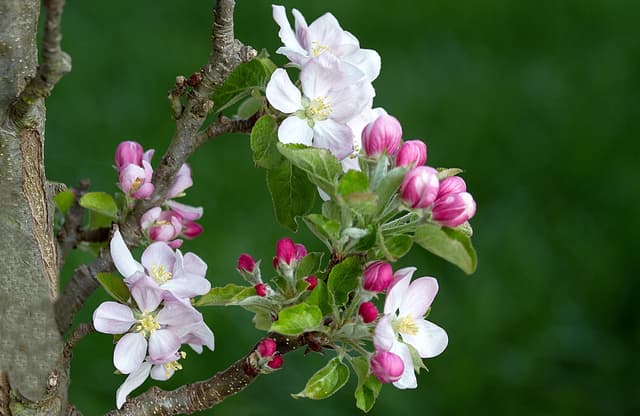Starter quiz
 Look at the plant below. Is this an example of a flowering or non-flowering plant?
Look at the plant below. Is this an example of a flowering or non-flowering plant?- flowering plant ✓
- non-flowering plant
-
- Reproduction is when…
- living things make more living things of the same type. ✓
- plants produce food for themselves.
- seeds germinate and start to grow.
- living things change over time.
-
- Runners, bulbs and tubers are examples of ______ reproduction in plants.
- 'asexual' ✓
 A plant that has reproduced and created offspring is called a…
A plant that has reproduced and created offspring is called a…- houseplant.
- flowering plant.
- parent plant. ✓
-
 After a flower has been pollinated, ______ form inside the flower.
After a flower has been pollinated, ______ form inside the flower.- 'seeds' ✓
- A clone of a plant is offspring that has…
- characteristics that are a combination of two parent plants.
- the same characteristics as the parent plant. ✓
- different characteristics to its parent plant.
-
Exit quiz
 Which statement about plant reproduction is correct?
Which statement about plant reproduction is correct?- Plants can only reproduce by making seeds.
- Plants must always be pollinated by animals before they can reproduce.
- Plants can reproduce in different ways. ✓
- Plants cannot reproduce on their own; there must be a second parent plant.
-
- We can take ______ from plants to produce a new plant.
- 'cuttings' ✓
- Starting with the first, order the steps to explain how to produce a new plant from a cutting.
- 1⇔Cut a small stem or side stem from a plant.
- 2⇔Remove all but the very top leaves.
- 3⇔Place it in water or compost.
- 4⇔Keep it somewhere light and warm but out of direct sunlight.
- Plants that have been produced with cuttings are clones of the parent plant, which means…
- they will have the same characteristics as the parent plant. ✓
- they will grow to be bigger and stronger than their parent plant.
- they have been created in a lab by scientists.
-
- Plant growth from cuttings can be __________ over time to help us understand more about plant reproduction.
- observed ✓
- predicted
- concluded
-
 Sofia is observing how some plants are developing from cuttings in her classroom. Which information could she gather to help her understand how the plant is growing?
Sofia is observing how some plants are developing from cuttings in her classroom. Which information could she gather to help her understand how the plant is growing?- the weather outside
- the colour of the compost
- the height of the plant ✓
- the time it took her to write down her observations
-
Worksheet
Loading worksheet ...
Presentation
Loading presentation ...
Video
Lesson Details
Key learning points
- Plants reproduce to make new plants, or offspring, in different ways.
- Some plants reproduce when part of a single plant is used to generate a new plant.
- Cuttings produce clones of the parent plant; they are exactly the same.
- Plant growth can be observed and recorded over time.
Common misconception
Pupils may think that the only way for plants to reproduce is by creating seeds.
Explain that, as well as making seeds, plants can also reproduce asexually in a range of ways, including form cuttings taken from a plant by humans.
Keywords
Reproduce - When living things reproduce they create offspring.
Offspring - Living things create offspring when they reproduce.
Parent plant - A parent plant is a plant that has reproduced and created offspring.
Asexual - Asexual reproduction involves one parent and produces offspring that has the same characteristics as the parent.
Clone - Clones are offspring that have been created asexually and have identical characteristics to their parent.
+